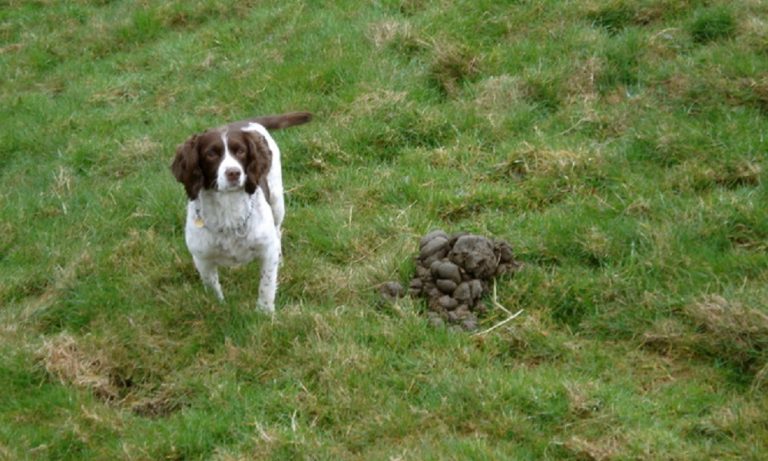Can Dogs Eat Taro Root?
Dogs can eat taro root, but it should be served in moderation. Taro root is a starchy vegetable that contains high levels of fiber and vitamins A, C and E. It is also a good source of minerals such as magnesium, potassium and iron.
However, taro root does contain oxalates which can cause health problems for some dogs so it’s best to introduce it slowly into your pet’s diet and consult with your veterinarian before feeding taro root regularly.
Is Taro Root Ok for Dogs?
Taro root, also known as dasheen and eddoe, is a versatile root vegetable that can be found in many tropical regions. While taro has numerous health benefits for humans, it’s not so clear whether or not it’s OK for dogs.
While most experts agree that small amounts of taro root are safe for dogs to eat, there are other factors to consider before adding this starchy tuber to your pup’s diet. Taro contains a toxin called oxalate which can be harmful when consumed in large quantities.
Additionally, some types of raw taro root contain calcium oxalate crystals which can cause skin irritation on contact and could be dangerous if eaten by your dog.
On the upside, cooked taro provides essential vitamins and minerals like vitamin C and potassium as well as dietary fiber which may help with digestion.
Ultimately, you should consult with your veterinarian before feeding any human foods to your pet because individual nutritional needs vary greatly between breeds and individuals.
How Do You Treat Taro Poisoning in Dogs?
Taro poisoning in dogs is a serious condition that can cause life-threatening symptoms. The best way to treat taro poisoning in dogs is through early diagnosis and prompt medical treatment by a veterinarian.
First, it is important to be aware of the signs and symptoms associated with taro poisoning in dogs, which may include vomiting, diarrhea, lethargy, anorexia (lack of appetite), abdominal pain, seizures or tremors. If you suspect that your dog has ingested any part of the plant then it is important to seek immediate veterinary care as soon as possible.
Your vet will conduct a physical examination and run tests such as blood work or urinalysis to diagnose the problem correctly. Treatment for taro poisoning depends on how much was consumed
When it was consumed; however there are several options available including decontamination procedures such as inducing vomiting or administering activated charcoal to absorb any remaining toxins still present in the stomach/intestines.
Additionally fluids may also be administered intravenously if dehydration occurs due to excessive vomiting or diarrhea caused by the toxin ingestion. In some cases antibiotics may also be prescribed since secondary infection could occur due to irritation from ingested pollen grains found on some parts of this plant species.
What are the Symptoms of Taro Poisoning?
Taro poisoning (also known as colocasia intoxication) is an illness caused by eating certain parts of the taro plant. It produces a variety of symptoms, ranging from mild to severe, depending on the amount ingested and individual sensitivity.
Symptoms generally appear within 1–4 hours after consumption and can include nausea, vomiting, abdominal cramps and pain, diarrhea, dizziness or lightheadedness, headache, confusion or disorientation as well as skin itching or rashes.
In more serious cases there may be difficulty breathing due to swelling in the throat area (angioedema), muscle paralysis (neuromuscular blockade), shock due to low blood pressure and heart failure; all potentially leading to death if not treated quickly with medical attention.
Treatment consists of administering medications such as epinephrine for angioedema and calcium gluconate for neuromuscular blockade along with supportive measures such as monitoring vital signs like pulse rate and oxygen saturation levels in order to ensure proper oxygen delivery throughout the body while these drugs are taking effect.
Can Cats Eat Taro Root?
Cats can eat taro root in moderation. Taro root is a natural and nutritious food for cats, as it contains dietary fiber, essential vitamins and minerals such as calcium, magnesium and potassium. However, due to its high starch content, eating too much of this root vegetable could cause digestive upset or even gastric distress.
As with all human foods that are fed to cats, it’s important to ensure that the taro root is cooked properly before being served to your cat – raw taro should be avoided at all costs because of its potential toxicity.
Additionally, serving sizes should be kept small since large amounts can lead to gastrointestinal problems like diarrhea or vomiting.
Finally, make sure you introduce any new food slowly so you can monitor your pet’s reaction – if they refuse the food or show signs of discomfort after eating it then discontinue feeding them taro immediately.
Can Dogs Eat Cooked Taro Root?
Yes, dogs can eat cooked taro root as long as it is properly prepared and free of seasonings or additives like garlic or onion. Taro root is an excellent source of carbohydrates and fiber that can help with digestion, but should be fed in moderation due to its high levels of oxalates which could lead to kidney stones if consumed too often.
Additionally, cooking taro root will make it easier for your pup to digest so it’s important not to feed them raw pieces.
Can Dogs Eat Taro Ice Cream?
Taro ice cream may be a delicious treat for humans, but it’s not safe to give your pup. Dogs shouldn’t eat taro ice cream because it contains ingredients like sugar and dairy that can upset their stomachs, as well as potentially toxic ingredients like xanthan gum.
Furthermore, the cold temperature of the ice cream could cause an upset stomach or other digestive problems. It’s best to keep this favorite dessert just for humans!
Taro Root for Dogs
Taro root, also known as dasheen or eddoe, is a popular starchy vegetable from the Araceae family that can be beneficial for dogs when included in their diet. It’s high in dietary fiber and packed with essential minerals like calcium, magnesium, potassium and iron which can support bone health.
Additionally, taro root contains B-vitamins to help maintain energy levels and aid digestion. However, it should only ever be fed to your pup cooked – never raw – as raw taro root may contain elevated levels of oxalic acid which could lead to digestive issues.
Can Dogs Eat Laing?
Dogs can eat laing, but it should not be a regular part of their diet. Laing is an unleavened dish made from taro leaves and coconut cream that originated in the Philippines.
It is high in sodium and fat which can cause gastrointestinal upset or pancreatitis if ingested in large amounts. If you choose to give your dog any laing, it should be a small portion given only occasionally as a treat.
Conclusion
In conclusion, although taro root can be a nutritious and healthy snack for dogs in moderation, it is important to keep in mind that too much of this food can cause digestive problems.
Make sure to check with your veterinarian before adding any human foods into your dog’s diet. If you must feed them taro root, the best way is to cook it first and only give them small amounts once or twice a week at most.



